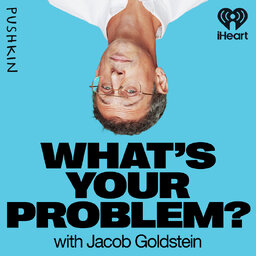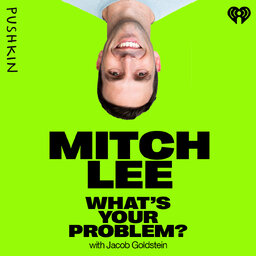Small Pizza Shops Want a Bigger Slice
Ilir Sela is the co-founder and CEO of Slice. His problem: How do you bring the technological revolution to thousands of tiny mom and pop pizza shops?
Most local pizza shops haven't adapted well to consumers' appetites for online ordering. Ilir's mission is to make sure that the technology powering Big Pizza can also benefit smaller businesses.
This is the first episode of What's Your Problem's four-part series on the future of food.
If you’d like to keep up with the most recent news from this and other Pushkin podcasts be sure to subscribe to our email list.
 What's Your Problem?
What's Your Problem?


